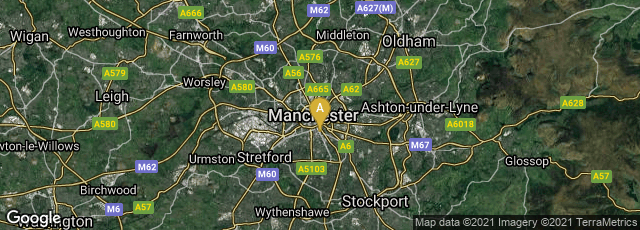

A: Manchester, England, United Kingdom
From 1807 to 1827 John Dalton published in Manchester, England, A New System of Chemical Philosophy in Volume 1, parts 1 and 2, and Volume II, part 1. Dalton's chemical atomic theory was the first to give significance to the relative weights of the ultimate particles of all known compounds, and to provide a quantitative explanation of the phenomena of chemical reaction. Dalton believed that all matter was composed of indestructible and indivisible atoms of various weights, each weight corresponding to one of the chemical elements, and that these atoms remained unchanged during chemical processes. Dalton's work with relative atomic weights prompted him to construct the first periodic table of elements (in Vol. i, pt. 1), to formulate laws concerning their combination and to provide schematic representations of various possible combinations of atoms. His equation of the concepts "atom" and "chemical element" was of fundamental importance, as it provided the chemist with a new and enormously fruitful model of reality.
The copy of Volume 1, part 1 which Dalton inscribed to James Watt on July 5, 1808 was bound in marbled boards with a paper spine and printed label. Vol. 1, part 2 (1810) was also originally issued in a similar style of binding. Hook & Norman, The Haskell F. Norman Library of Science and Medicine (1991) No. 575, describes a matching set of the three volumes bound in original cloth-backed boards. This set, which was probably bound around the time Volume II, part 1 was issued in 1827, was a relatively early use of cloth in bookbinding. Carter & Muir, Printing and the Mind of Man (1967) No. 261.